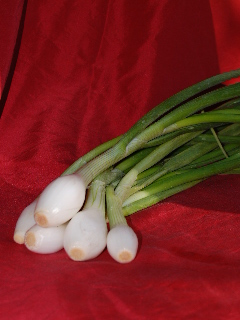
Talk about a lowly food.
Nothing glamorous about these little rascals whose greatest claim to fame is the ability to make you cry.
However, there’s more to the onion than its humble appearance and its unsavory reputation for tear production and acrid taste.
As gardeners interested in growing our own healthy foods, let’s give a little praise to the onion for being one of the least demanding (and easiest to have success with) plants we can cultivate.
Onions can be started from seeds but we don’t recommend this, as too much time to maturity is required.
Better results (and less time to the table) will be assured from planting onion sets or small plants directly into your garden.
Onions like cool weather, so set them into loose rich organic soil early in the year after freezing temperatures have past.
A good source of onion plants and sets is always the Burpee® Seed Company.
Choose several varieties to see which you like best at maturity when they find their way into your kitchen and into any number of sauces, casseroles, and soups. White, yellow, purple, sweet—choices are plentiful.
Now, on to why we plant, grow, and eat onions anyway.
So what if they’re not the flashiest looking little sports cars in the gardening world?! What they lack in glitter and stylish appearance they more than make up for with an abundance of health benefits when added into your diet.
Onions are high in dietary fiber and Vitamin C.
They are in the Allium family (along with garlic) and have many of the same benefits as garlic when added to the diet, such as increased cardiovascular health and greater resistance to colorectal and stomach cancer as well as lowering of levels of bad cholesterol.
Onions have been cultivated and consumed for thousands of years and had a place in the diet of the ancient Egyptians.
Grow them, eat them, and try not to cry when you prepare them—after all, they’re really good for you!
 Talk about a lowly food.
Talk about a lowly food.